Top 9 Interesting Facts about London
London is a wonderful place. It is hardly surprising that every year, millions of eager foreign visitors, students, and permanent residents flock to London. ... read more...Its extensive and fantastical history is evident in everyday life through its magnificent architectural creations, cultural and social diversity, and amazing tales. Today, let's follow Toplist to discover some interesting facts about London
-
London has traditionally been one of the most culturally varied cities in the world. The city has drawn visitors from all over the world since its Roman founding in the year AD50. Some of the first immigrants came as invaders in search of riches and territory. Some were forced immigrants who arrived as slaves or servants. Others opted to immigrate as refugees or economic migrants in order to escape hardship, destitution, or political or religious persecution. They hoped that opportunities in London would change their lives.
Today, as one of the most diverse cities in the world, London houses nearly 9 million residents. According to studies, more than 300 languages are spoken in London's schools today, including Bengali, Gujarati, Punjabi, Cantonese, Mandarin, Hokkien and of course English. The city's development continues to be significantly influenced by immigrants, from its economic expansion to its cultural life.
London has emerged as the city with the broadest linguistic diversity. Of the 8.9 million people who call London home, 22.1 percent claim that English is not their first language. This is not to argue that most people do not comprehend English, but it might result in a lot of individuals having daily comprehension difficulties.

Photo: lolwot 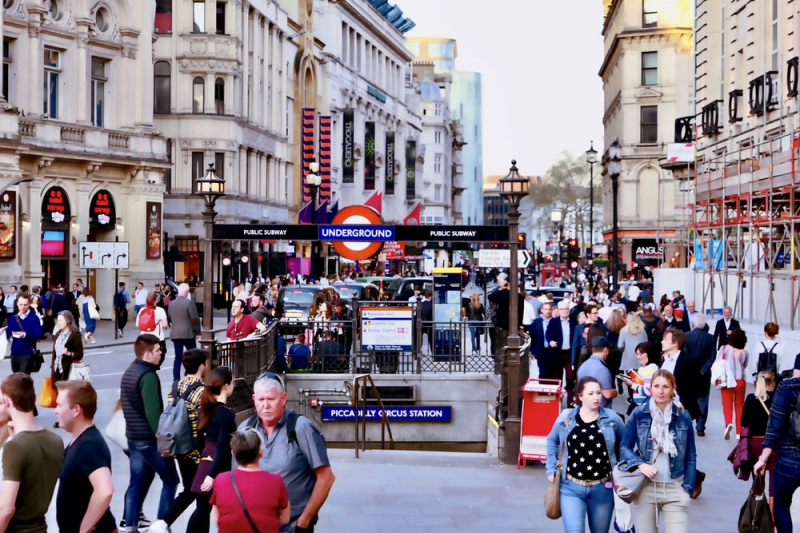
Photo; People in London - Unplash -
You've probably seen the enormous clock tower at the Palace of Westminster's corner if you've ever visited to London or even just seen a photograph of it. Along with the London Eye, and red double-decker buses, this tower is one of London's most recognizable landmarks.
One of the interesting facts about London, Big Ben is not the name of the actual clock tower. Instead, it was given the name "Elizabeth Tower" to honor Queen Elizabeth II, who was celebrating her Diamond Jubilee (the 2012 60th anniversary of her accession to the throne). Its previous name was simply "Clock Tower."
Neo-Gothic architecture was used in Augustus Pugin's design of the tower. Its clock was the biggest and most precise four-faced striking and chiming clock when it was finished in 1859. The tower is 334 feet (96 meters) tall, and there are 334 steps that must be taken to get to the belfry. It has a square base that is 40 feet (12 meters) on each side. The clock's dials have a diameter of 22.5 feet (6.9 m). The tower of shields features symbols for each of the UK's four countries: a rose for England, a thistle for Scotland, a shamrock for Ireland, and a leek for Wales. Celebrations were conducted to commemorate the tower's 150th birthday on May 31, 2009.
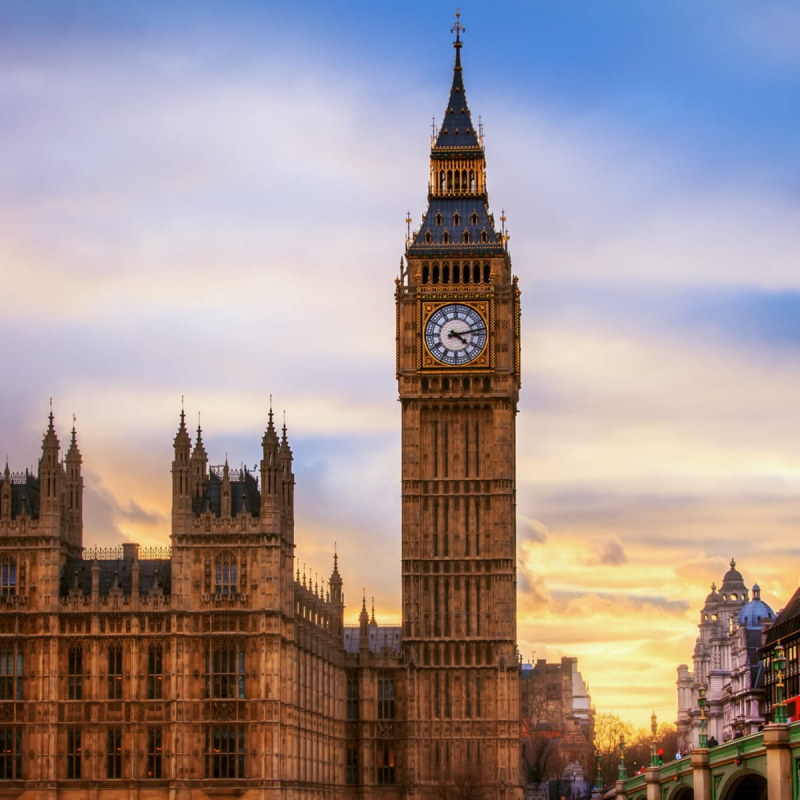
Photo: history 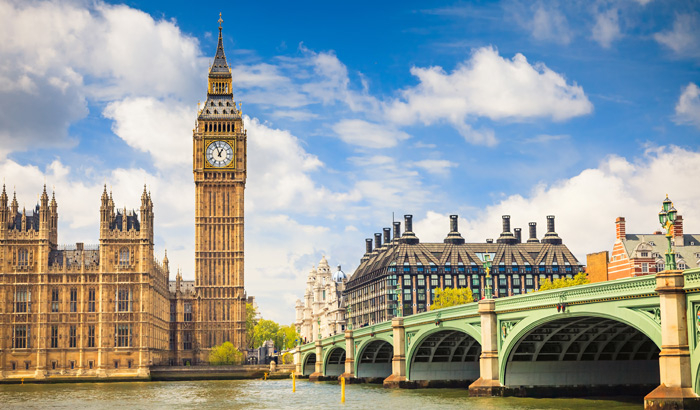
Photo: makemytrip -
It is true that London is the smallest city in England. The London you envision is only a small urban area that is a component of the Greater London Region. Only 1.2 square miles in size, the City of London is home to about 7,500 people. Administratively, the City of London does not have the same status as the other 32 districts, which include the only other city in Greater London, the City of Westminster. Being an enclave surrounded by Greater London, it is also a distinct ceremonial county and the smallest in the United Kingdom.
As a result, London is actually England's smallest city. On the other hand, Greater London is an English territory that includes nearby towns and has a total area of 606 square miles and a population of over 8.7 million people. Nowadays, a lot more than only the city is referred to as London. Along with the City of London itself, the term "London" is most frequently used to refer to the huge metropolis of London or the 32 Greater London boroughs. Since the County of London was established in 1888, there has been evidence of this expanded use of the name London.
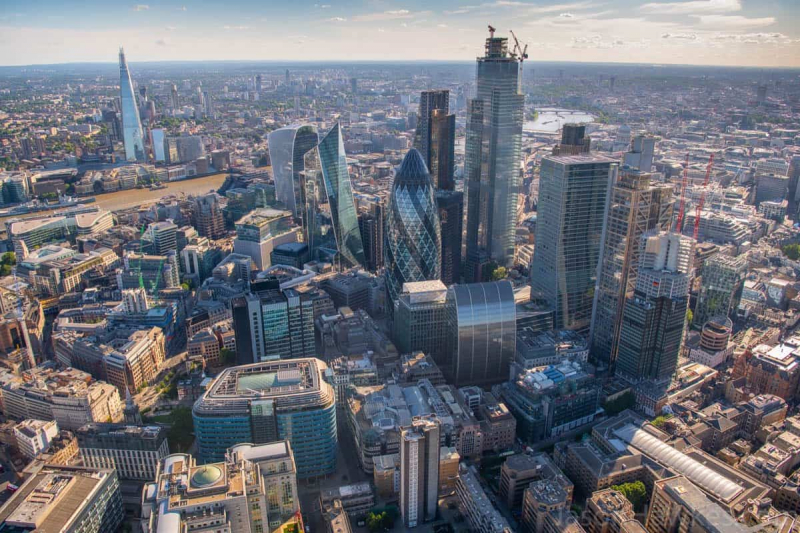
Photo: City of London - evanevanstours 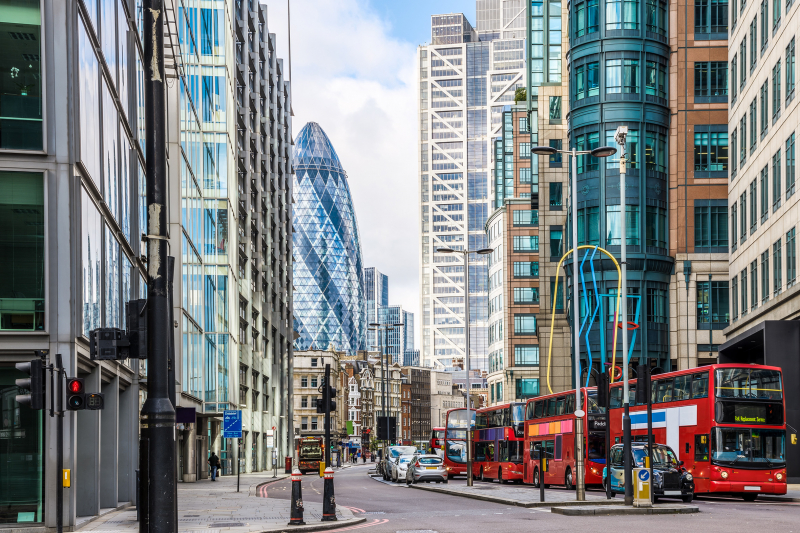
Photo: timeout -
The smallest statue in the world is a statue showing two mice eating a slice of cheese. Since the structure was constructed in 1862, the little statue has been affixed to its wall.
According to the legend surrounding the statue, two construction workers who were taking a lunch break on top of the Monument of Great Fire during its construction. They were buddies, but when one of them saw his cheese sandwich was missing, he accused his friend of stealing it, that's when things got awkward between the two of them.
Over the missing cheese sandwich, they got into a quarrel, and as a result, both men died after falling from the 62-meter-high monument. It was discovered later that mice who lived on the construction site had taken the cheese sandwich.
The smallest statue in London was erected in their honor, and it is still there today to serve as a reminder that the two men died as a result of a sandwich.
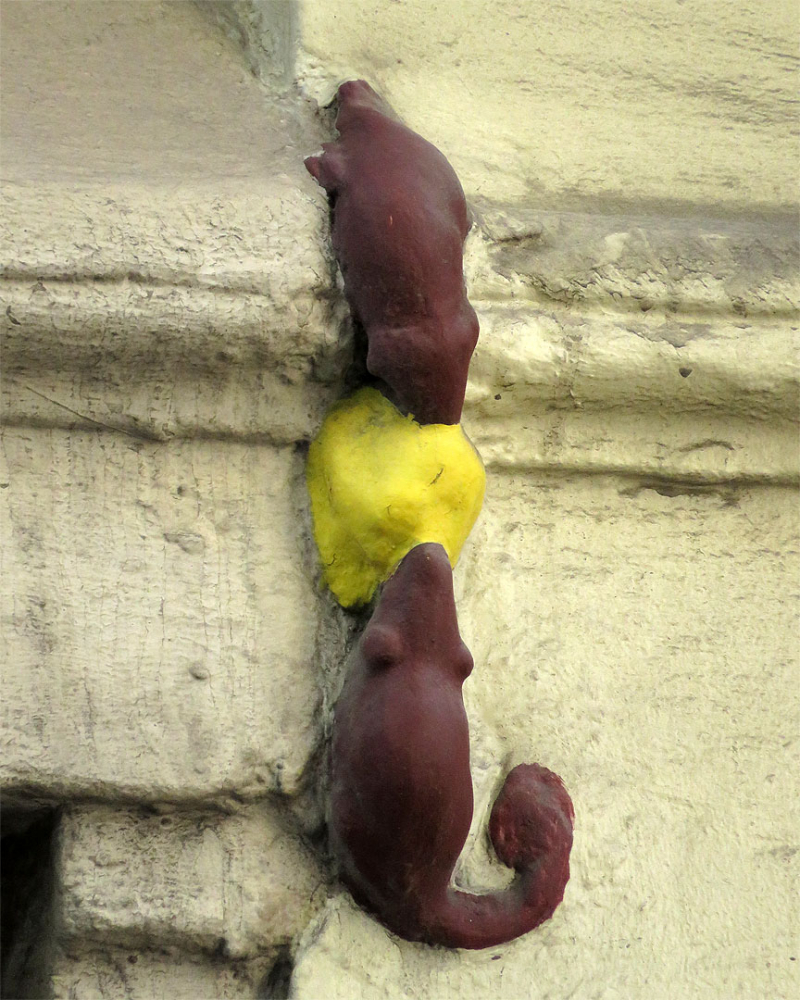
Photo: dailyphotostream 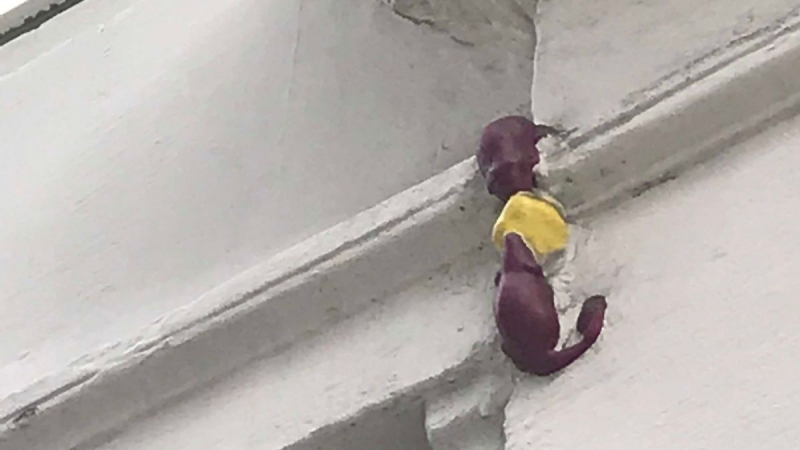
Photo: mylondon -
Due to numerous representations in cinema and television, black cab drivers are well-known throughout the world. However, most people are unaware of how challenging it is to work as a black taxi driver in the city.
One of the interesting facts about London, you must pass "The Knowledge," a demanding test in which you must memorize every roadway in the city, before you can drive a black cab. Before passing the test, black cab drivers may need to spend years memorizing the roads. To recall all the complicated back alleys and side streets, many of them ride scooters or walk throughout the city.
Drivers have successfully completed tests that require years of study and have memorized every street in the city for 150 years. Now, all you need is Uber and a GPS to go about, which has sparked a big conflict between a London institution and a business that is upending the global taxi industry.
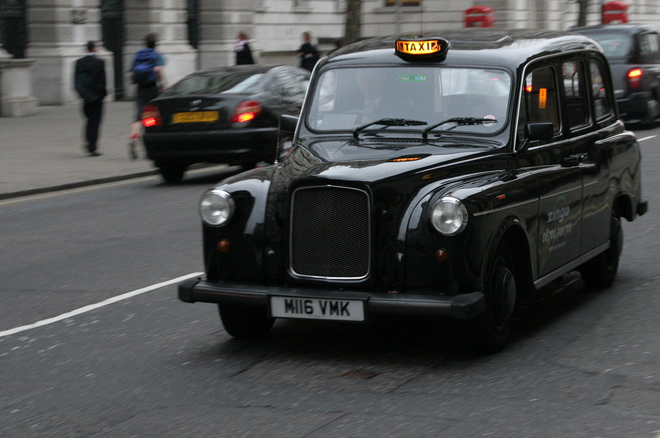
Photo: wired 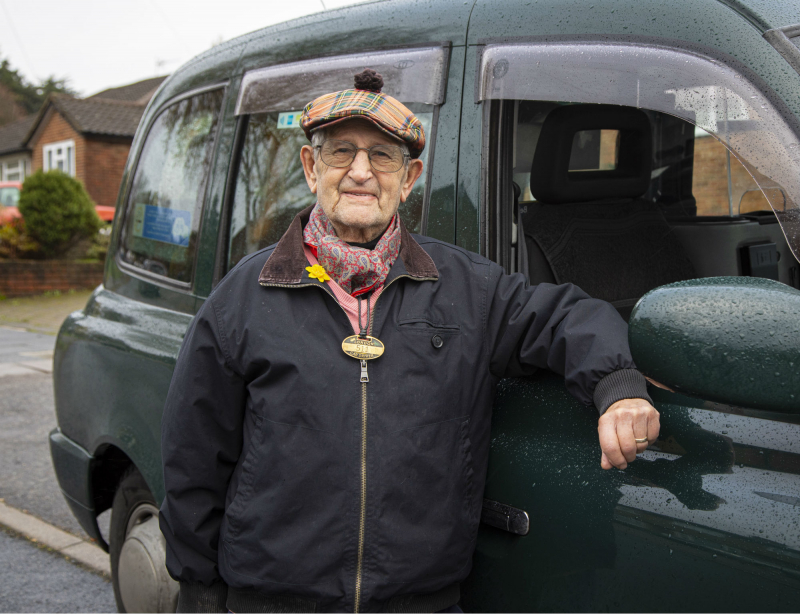
Photo: timeout -
The Houses of Parliament, often known as the Palace of Westminster, is one of the many architectural icons that London is proud of. It is situated in the London borough of Westminster on the left bank of the River Thames.
The royal palace, dubbed the biggest in the entire nation, was rumored to have stood there under the Danish monarch of England Canute. But the structure, described as an "incomparable structure" by William Fitzstephen, was constructed for Edward the Confessor on the 11th century and afterwards expanded by William I. (the Conqueror). The palace sustained severe fire damage in 1512 and was no longer used as a royal home. By 1550, the House of Commons meetings, which had previously been held in Westminster Abbey's chapter house while the Lords met in another chamber of the palace, were held in St. Stephen's Chapel. Except for the famous Westminster Hall, the Jewel Tower, the cloisters, and the crypt of St. Stephen's Chapel, the entire palace was completely destroyed by fire in 1834.
The current structures were created in the Gothic Revival style by Sir Charles Barry with A.W.N. Pugin's assistance. The building process started in 1837, the cornerstone was set in 1840, and the project was completed in 1860. One of the numerous air raids that hit London during World War II resulted in the Commons Chamber being completely destroyed; nevertheless, it was later rebuilt and reopened in 1950. The Commons is 70 feet (21 meters) long, while the elegant House of Lords is 97 feet (29.5 meters) long. The Victoria Tower in the southwest is 336 feet (102 meters) tall. With a height of about 320 feet (97.5 meters), Elizabeth Tower (formerly St. Stephen's Tower) houses the renowned tower clock Big Ben. In 1987, the Houses of Parliament received the same honor as Westminster Abbey and St. Margaret's Church as a UNESCO World Heritage property.
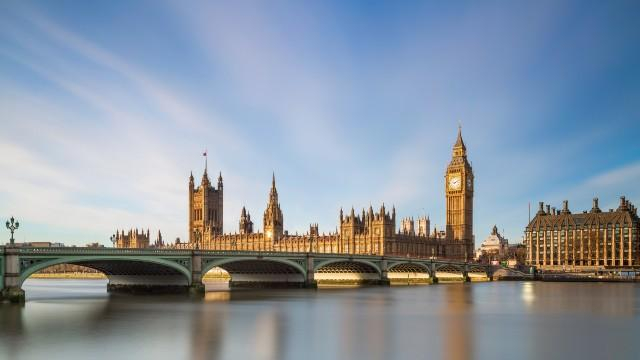
Photo; london 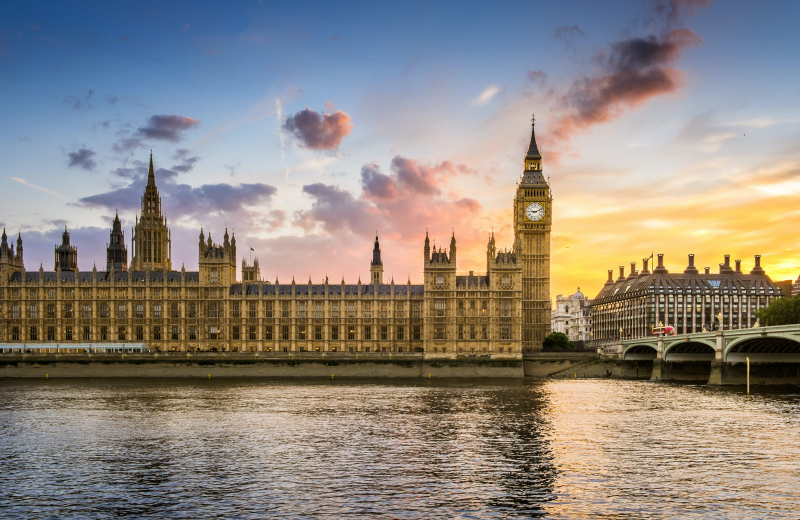
Photo: lonelyplanet -
One of the most recognizable images of the city is its fleet of red buses. However, one of the interesting facts about London is this hue wasn't always present on the famous buses. Each of them used to have a unique color, with each color denoting a particular route. The origin of their color can be traced back to the early 1900s when the transportation system was run by many rival businesses.
The majority of the buses were owned by the London General Omnibus Company (or L.G.O.C. ), which painted its entire fleet red in 1907 to stand out from rivals. The color was chosen by London Transport in 1933 and has been used ever since. The London Underground roundel, the Royal Mail, Kit & Kat, and McDonald's all utilize the same color. It is this that has created a special for London, making the city more famous all over the world.
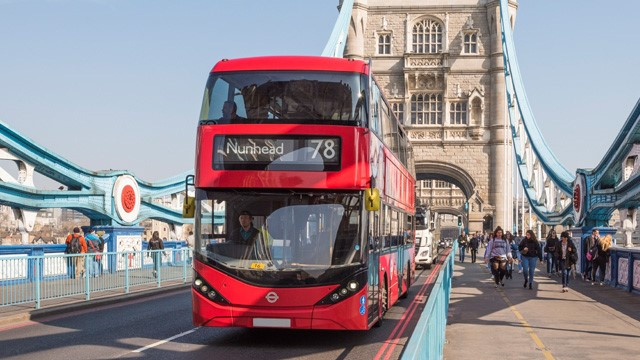
Photo: london 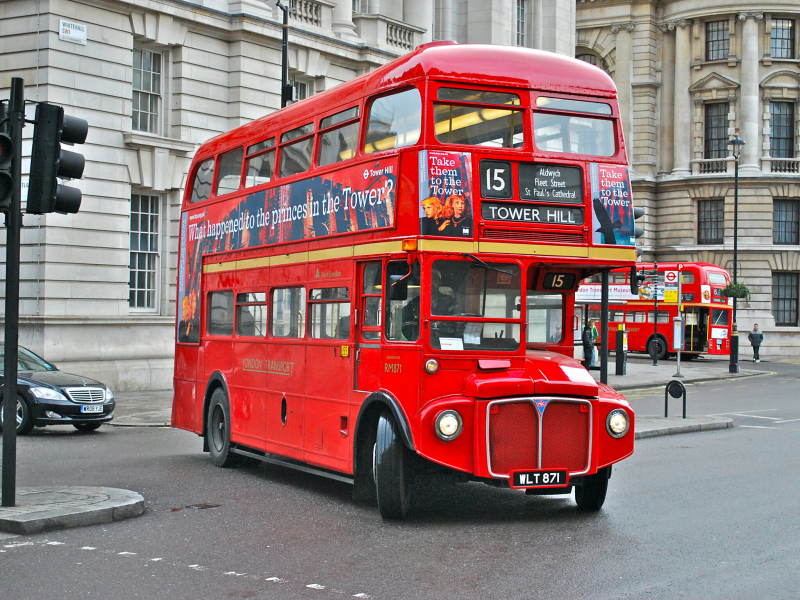
Photo: timeout -
You have undoubtedly heard of the disastrous Great Fire of London if you have any interest in London's history. The Great Fire of London was a significant fire that engulfed the heart of London between Sunday, September 2, and Thursday, September 6, 1666. Within the ancient Roman city wall, the fire destroyed the medieval City of London.
On Sunday, September 2, just after midnight, a fire broke out in a bakery and quickly spread throughout the building. Due to Sir Thomas Bloodworth, the Lord Mayor's indecision, the adoption of the primary firefighting method at the time—creating firebreaks by demolition—was severely delayed. The wind had already turned the bakery fire into an inferno by the time extensive demolitions were mandated on Sunday night, defeating such efforts. On Monday, the fire spread to the city's center from the north. As rumors of questionable foreigners starting fires spread, order in the streets was disrupted. The French and Dutch, two significant immigrant groups who were the targets of street violence and England's adversaries in the ongoing Second Anglo-Dutch War, were the subjects of the homeless' anxieties. Almost the entire City was affected by the fire on Tuesday, which also destroyed St. Paul's Cathedral and threatened Charles II's court at Whitehall by crossing the River Fleet. Firefighting operations were being coordinated at the same time. The Tower of London garrison employed gunpowder to effectively establish firebreaks, which prevented the fire from spreading further east, and the strong east wind diminished, which are regarded as the two decisive reasons in the struggle to put out the fire.
Despite the fire's massive destruction, only six people were confirmed dead. However, the actual number is unknown because it is impossible to determine how many people died as a result of the fire's causes after the fact. To honor the catastrophe, the Monument building was erected in 1677 and is still standing today. It was the city's tallest structure at the time.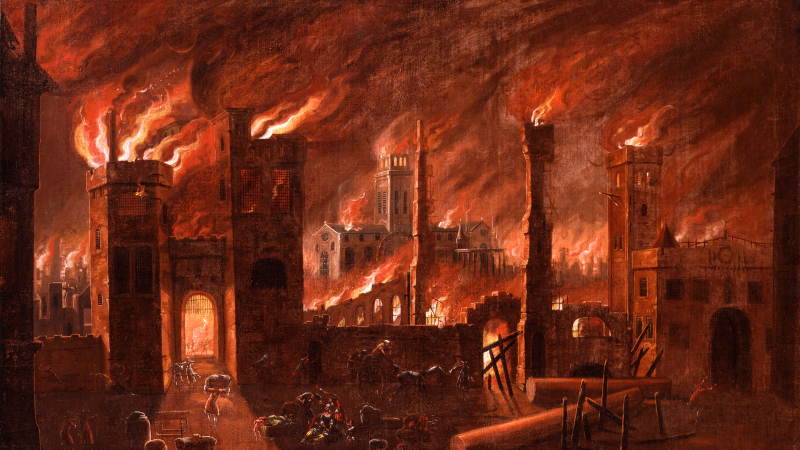
Photo: nytimes 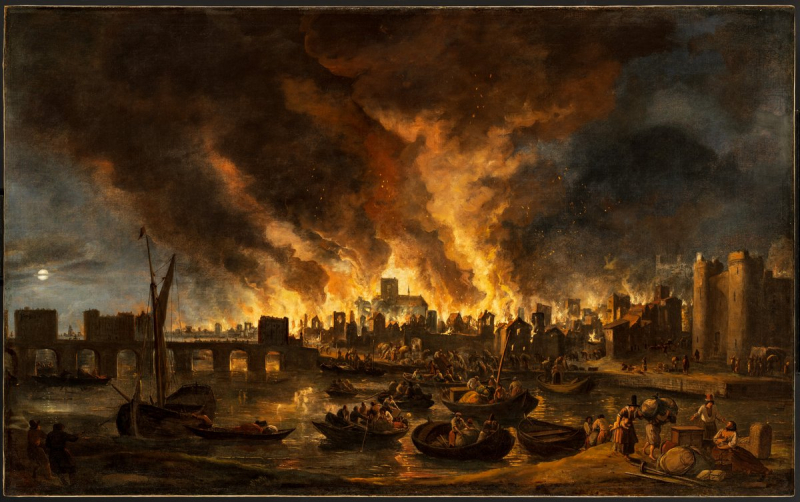
Photo: mfab -
Everyone is aware that English drivers always travel on the left side of the road. There is one neighborhood in the UK, though, where tourists may reconnect with their ancestors.
The iconic Savoy, which has a driveway named Savoy Court going up to it, is located just off The Strand. British drivers are required to drive on the opposite side of the road on this particular road, with the words "IN" and "OUT" painted in large characters on the pavement to prevent unpleasant accidents.
Horse-drawn or mechanical vehicles have entered and exited "Savoy Court" on the right side of the road for more than a century. This is mainly because of how the "Court" was built. Driving on the right side of the road makes it simpler to approach and depart from the hotel. Savoy Court is a home that is privately owned. Since it solely goes to the hotel, it is not a public thoroughfare. Therefore, it is not against British traffic laws to drive on the right side of the road. The lady or dignitary would customarily sit behind the driver when being chauffeured in a horse-drawn carriage, which may be interesting to notice. The driver or the hotel doorman was able to open the door without having to walk past the automobile by approaching the hotel from the right-hand side of the road. This would enable the lady to exit the carriage and enter the hotel without stopping.
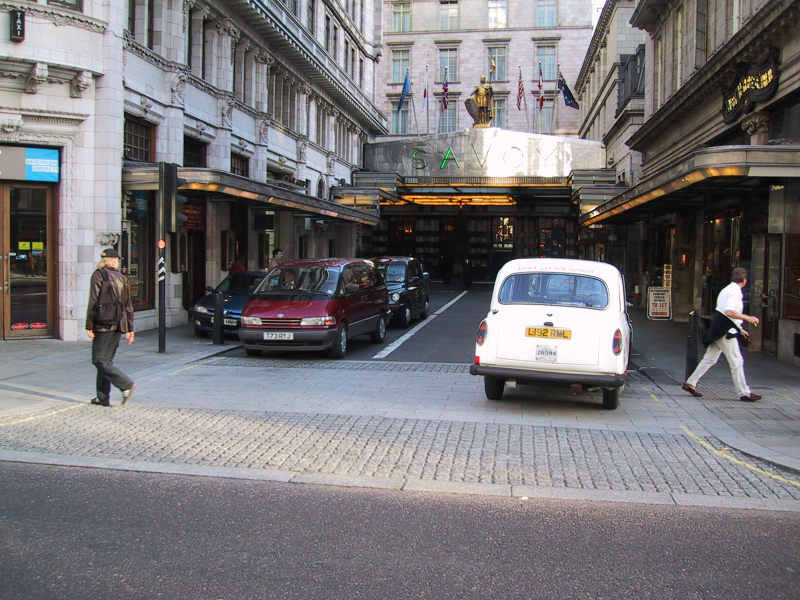
Photo: wikipedia 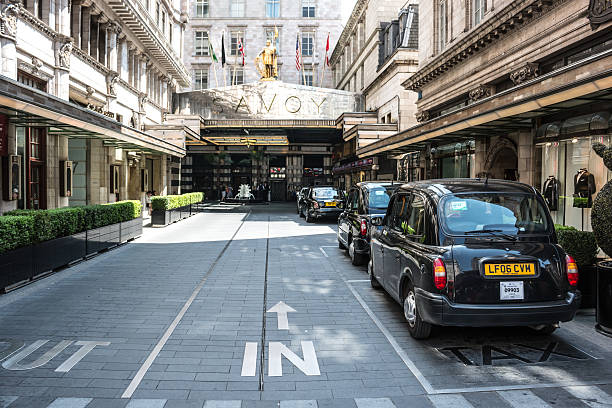
Photo: istock






























